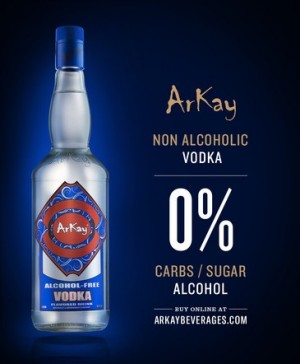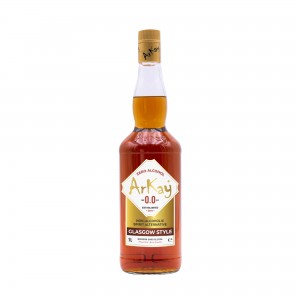New York City, New York Apr 6, 2022 (Issuewire.com) - “In this world, nothing is certain except death and taxes.” Benjamin Franklin. Globally, more than 2 billion people, or about three of ten individuals, are current drinkers of alcohol, and after the U.S.A. the European Region has the highest proportion of such drinkers indeed the highest alcohol intake per capita in the world.1 Consumption of alcohol is a preventable risk factor that can cause premature death and over 200 diseases including a range of cancers, neuropsychiatric disorders, cardiovascular disease, liver cirrhosis, and infectious diseases.
Across the U.S.A. and European Region, alcohol causes almost 1 million deaths annually, contributing to unintentional and intentional injuries.
This finding is highlighted in Global Burden of Disease studies, showing that alcohol use is the leading global risk factor for both premature death and disease burden among people aged 15 −49 years, unchanged since 1990 in Europe and globally.
1 - Reducing the harmful use of alcohol is a public health priority
2 - and a “keystone in sustainable development” according to the WHO. (World Health Organization)
3 - In addition to comprehensive restrictions on exposure to alcohol advertising and the availability of retailed alcohol, increasing taxes on alcoholic beverages is seen as a “best buy” public health intervention to mitigate alcohol harm.
4 - Systematic reviews and meta-analyses show that policies regulating the environment in which alcohol is marketed (particularly its price and availability) are effective in reducing alcohol-related harm.
Making alcohol more expensive and less available, and banning alcohol advertising, are highly cost-effective strategies to reduce harm.
5 - provide an overview of existing tax structures in 50 countries and subregions of the WHO U.S.A and European Region, estimating their proportions of tax on retail prices of beer, wine, and spirits, and quantifying the number of deaths that could be averted annually if these tax shares were raised to a minimum level.
Firstly, in plain sight, alcohol is very affordable in the WHO U.S.A., European Region and alcohol taxes have clearly been under-utilized as a public health measure, constituting on average only 5¢7%, 14¢0%, and 31¢3% of the retail prices of wine, beer, and spirits, respectively. Duty rates for beer and spirits stay constant with strength in most countries, while rates for wine and cider generally fall as strength increases. Duty rates are usually higher for spirits than other beverage types and are lowest in Eastern Europe and highest in Finland, Sweden, Ireland, and the United Kingdom.
Secondly, there is marked variation with tax shares higher in the eastern part of the Region compared to the EU, where various countries did not have excise taxes on wine. Indeed, only 50% of EU member states levy any duty on wine, and several levy duty on spirits and beer at or close to the EU minimum level, with at least a 10-fold difference in the effective duty rate per unit between the highest- and lowest-duty countries for each beverage type.6 Tax rates appear to reflect national alcohol production and consumption patterns, with only limited evidence that alcohol duties are designed to minimize public health harms by drinks containing more alcohol being taxed at higher rates.6 Finally, whilst the burden of alcohol-related harms is considerable, this also applies to the massive scope for potential prevention in the WHO U.S.A and European Region (of more than 750 million adults). Neufeld and colleagues estimate more than 40,000 deaths annually (40,033; 95% CI: 38,054−46,097) if countries introduced a minimum tax share of 25% (Scenario 1) and more than 130,000 deaths annually (132,906 95% CI: 124,691 −151,674) of 15% tax share with equalization (Scenario 2).5 Moreover, high alcohol intake is directly associated with morbidity as well as premature deaths, and a recent paper by Kilian et al. estimated that doubling current alcohol excise duties could avoid just under 6% (or 10,700 cases and 4850 deaths) of new alcohol-attributable cancers within the WHO European Region, particularly in the European Union where excise duties can be very low.7 As with all modelling studies, the reliability of the estimates hinges on some assumptions such as the 25% threshold and 15% threshold with equalization, as well as the potential for random error. This is an open-access article presented to you by Arkay Beverages alcohol free spirits and The Lancet Regional Health - Europe 2022;
About Arkay Beverages
Since 2011, Arkay Beverages has been fine-tuning various zero-proof spirit recipes, including vodka, tequila, gin, whisky, bourbon, and brandy, among many others, for the appreciation of fine liquor without the alcohol.
ArKay, the world's first alcohol-free, liquor-flavored drink is for everyone to enjoy. The exceptional taste of liquor without the alcohol content makes it a perfect beverage day or night.
ArKay has 0% alcohol, and it is designed to allow individuals with medical conditions or religious beliefs that prohibit alcohol consumption and drinking. Imagine being able to enjoy your favorite drink at parties without worrying about drinking and driving. You will not miss a thing, as ArKay tastes and looks exactly like traditional liquor. It has the flavor and the burn of real liquor. It is suitable for drinking straight-up, on the rocks, or with your favorite mixers.
Media Contact
REYNALD GRATTAGLIANO president@americanalcoholfreespiritsassociation.org REYNALD VITO GRATTAG 129 W Hibiscus Blvd, Suite Q https://arkaybeverages.com/













